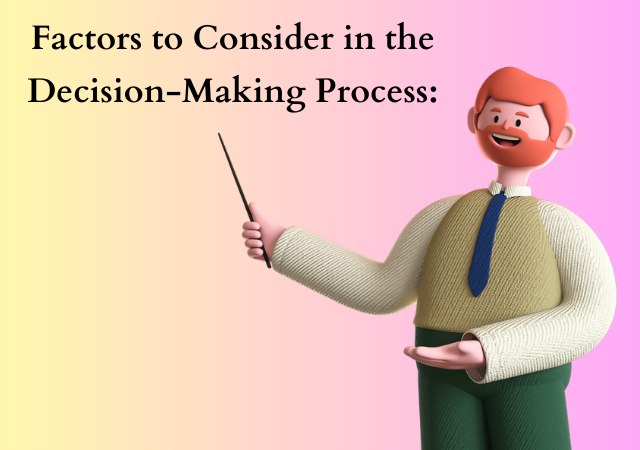Making a Financial Decision: Full Payment vs. EMI
Introduction
In the realm of personal finance, the choice between full payment and Equated Monthly Installments (EMI) represents a pivotal decision that individuals often face when making significant purchases. This decision is more than just a matter of payment method; it encompasses a careful evaluation of one’s financial health, goals, and preferences. The dichotomy between full payment, which offers immediate ownership and potential cost savings, and EMI, with its promise of financial flexibility and enhanced affordability, underscores the complexity of financial decision-making.
This article delves into the intricacies of this choice, dissecting the advantages and drawbacks of both options, offering insights into factors influencing the decision, and providing practical tips to guide individuals in making informed choices aligned with their unique financial objectives. Join us on a journey through the complexities of financial decision-making, where the choice between full payment and EMI unfolds as a crucial determinant of financial well-being.
Understanding Full Payment:

Full payment refers to settling the entire purchase amount upfront. This traditional approach comes with its own set of advantages and disadvantages. On the positive side, full payment can result in substantial cost savings, as it eliminates the accrual of interest charges associated with financing options. Additionally, it simplifies budgeting, offering a clear overview of the actual cost of the item without any hidden fees or interest.
However, the downside of full payment lies in its potential impact on cash flow. Paying a lump sum amount upfront can strain liquidity, leaving individuals with reduced financial flexibility for unforeseen circumstances or future opportunities. This trade-off between immediate cost savings and reduced cash liquidity underscores the need for a thoughtful assessment of one’s financial standing and goals.
Exploring Equated Monthly Installments (EMI):

EMI, on the other hand, represents a financing option where the total purchase amount is divided into equal monthly installments. This approach is designed to enhance affordability and ease the financial burden associated with significant purchases. The advantages of EMI include improved affordability, preserved cash flow, and the opportunity to make larger purchases that might be financially challenging under full payment conditions.
Despite its appeal, EMI comes with its own set of drawbacks. The most notable one is the accumulated interest charges over the installment period, leading to a higher total cost of ownership. Individuals opting for EMI also need to consider its potential impact on their credit score, as it involves a borrowing arrangement that reflects on their creditworthiness.
Factors to Consider in the Decision-Making Process:

- Financial Stability and Liquidity: The decision between full payment and EMI must start with an honest evaluation of one’s financial stability and liquidity. Those with a robust financial cushion may find full payment attractive for its cost-saving benefits, while those with liquidity concerns may lean towards the flexibility offered by EMI.
- Interest Rates and Overall Cost: Analyzing interest rates associated with EMI is crucial. While EMI provides immediate relief on cash flow, the accumulated interest may outweigh the benefits of affordability. A careful comparison of total costs under both options is necessary to determine the most financially prudent choice.
- Long-Term Financial Goals: Individuals should align their decision with long-term financial goals. If the purchase aligns with an overarching financial plan and does not compromise future objectives, the decision may lean towards full payment or EMI, depending on current circumstances.
- Credit Score Implications: The impact on credit scores is a critical consideration. While full payment doesn’t directly influence credit, responsible management of EMI can positively contribute to one’s credit history. Conversely, defaults or delays in EMI payments can have adverse effects.
- Flexibility and Future Financial Obligations: Future financial commitments and obligations should be factored into the decision-making process. EMI may offer more breathing room for individuals anticipating other financial responsibilities, such as education expenses, medical emergencies, or home purchases.
Case Studies:

To illustrate the practical implications of choosing between full payment and EMI, let’s examine a couple of hypothetical case studies:
Case Study 1: Laptop Purchase
Jane, a freelance graphic designer, needs to purchase a high-performance laptop for her work. The laptop costs $2,000. She has the financial means to pay the full amount upfront, but she’s also considering EMI to manage her cash flow more effectively.
Full Payment Scenario: Jane opts for full payment. She benefits from immediate cost savings, avoids interest charges, and simplifies her budgeting. However, the substantial outlay impacts her liquidity temporarily.
EMI Scenario: Choosing EMI, Jane divides the cost into 12 monthly installments of approximately $167 each. This approach allows her to preserve cash flow, making it easier to navigate other monthly expenses and potential business fluctuations. However, she ends up paying an additional $200 in total due to interest charges.
Case Study 2: Home Appliance Purchase
Mark and Sarah are a young couple looking to upgrade their kitchen appliances. They’ve set their eyes on a refrigerator costing $1,500. While they have savings, they’re also considering EMI to manage their monthly budget more effectively.
Full Payment Scenario: Opting for full payment, Mark and Sarah enjoy the immediate satisfaction of owning the refrigerator outright. However, this decision impacts their liquidity, leaving them with less financial flexibility for other potential expenses.
EMI Scenario: Choosing EMI, they decide on a 10-month installment plan, each amounting to $150. This approach allows them to spread the cost, maintaining their monthly budget intact. However, they end up paying an additional $50 due to interest charges.
Analysis of Different Scenarios and Outcomes:

In both case studies, the decision between full payment and EMI involves a careful trade-off between immediate financial impact and long-term affordability. The full payment option provides immediate ownership, cost savings, and simplicity in budgeting. However, it can strain liquidity temporarily.
On the other hand, EMI offers a more manageable approach to budgeting, preserving cash flow, and improving affordability. Yet, it comes at the cost of accumulated interest, resulting in a higher total expenditure. The choice ultimately hinges on the individual’s financial priorities, goals, and risk tolerance.
Tips for Making the Right Decision:

- Evaluate Personal Financial Goals: Assess your overall financial objectives and whether the purchase aligns with your broader financial plan. Consider factors such as short-term liquidity needs and long-term financial goals.
- Assess Current and Future Cash Flow: Analyze your current cash flow and future income expectations. Full payment may be suitable for those with stable income streams, while EMI might be preferred for individuals expecting fluctuations in their cash flow.
- Compare Interest Rates and Total Cost: Scrutinize the interest rates associated with EMI and calculate the total cost of ownership under both options. This will provide a clearer picture of the financial implications of each choice.
- Consider the Impact on Credit Score: Understand how your decision may affect your credit score. Timely payments on EMI can positively contribute to your credit history, while defaulting may have adverse effects.
- Negotiate Terms and Conditions with Lenders: Explore the possibility of negotiating terms and conditions with lenders. Some financial institutions may offer favorable interest rates or flexible payment schedules, influencing the overall attractiveness of the EMI option.
Conclusion
In the realm of personal finance, the choice between full payment and Equated Monthly Installments (EMI) is a pivotal decision. This decision requires a careful evaluation of financial health, goals, and preferences. Full payment offers immediate ownership and potential cost savings, but may strain liquidity. EMI provides financial flexibility and enhanced affordability, but comes with accumulated interest charges. The right choice depends on individual priorities, with a need to weigh factors such as stability, interest rates, long-term goals, credit score implications, and future financial obligations. Ultimately, a thoughtful assessment is crucial for informed decision-making in the complex landscape of personal finance.

My name is Rohit Vagh and I’m a content writer specializing in fashion and lifestyle. I have three years of experience in this field and have written various articles. My writing style is creative and engaging, and I strive to create content that resonates with my readers. I have a deep passion for fashion and am constantly researching the latest trends and styles to make sure my readers are up to date. I’m excited to continue my career in blogging, and I’m always looking for new opportunities in the fashion and lifestyle space.





